What is a 3-2 Zone?
A 3-2 zone defense is a defense with 1 player at the top of the key, 2 players in between the elbow and 3-point line(wings) and 2 players on the block(bigs). It is very similar to the 1-2-2 zone. For me, there is a distinction between the 3-2 and the 1-2-2.
In a 1-2-2, the point does not follow the ball. In a 3-2 zone the point follows the ball and stays on a line from the basket to the ball. This means the point man will be on the top of the defense when the ball is up high and on the block when the ball is down low. By having a player follow the ball, it requires the defensive team to have a player who can guard all 5 positions. There are not too many players that can do that but if a team has one, then the 3-2 zone can be effective.
If I want the 1-2-2 zone to look like a 3-2 zone, then I will call a 1-2-2 flat meaning the top 3 players will be flat across the zone. Likewise, if I want the point man to extend out of a 3-2 then I will call it a 3-2 extend but the point rotations stay the same. In all 1-2-2 zone variations the point man stays high. In all 3-2 zone variations the point man follows the ball.
Advantages of a 3-2 Zone
1) Rebounding
The 3-2 zone is a good rebounding defense because of the point man moving with the ball in the zone, the backside big gets to stay on their block. This gives the defense a big on the backside for rebounding.
Since most rebounds come off the rim to the backside of the floor, having a big there will help with rebounding. So no matter where the ball is shot from, the defense should have a big on the backside for rebounding.
2) Makes the Offense Play from the Outside
The 3-2 does not have much rotation aside from the point. Because of this the gaps that occur in any other zone get reduced. This makes it harder for the offense to move the defensive players to create gaps. Without these gaps, the offense can struggle to get the ball inside the zone. If the ball is not able to get into the middle of the zone, then the offense has to play from the outside. If a team does not have good shooters, then the offense can really struggle playing against this defense.
This is where the 3-2 zone really shines. The 3-2 zone has all 5 defenders guarding parts of the 3-point line. So, the 3-2 zone is able to contest and guard outside shooters. If the offense can not get the ball inside the zone, then the offense plays from the outside in which the 3-2 zone does a good job of guarding. When the ball does not get inside the zone, the offense can really struggle scoring the ball.
3) Simplicity
In a 3-2 zone, there is not a lot of rotation other than the point. Since the point is moving a lot, the other players do not have to move as much. The other 4 players will mainly stay in one central area and only move when the ball is in their area of the 3-point line. This simplifies the defense so basketball IQ should not matter. The amount of area each player is responsible for gets minimized except for the point.
Everything in this zone is simple except for the point. The defense needs a player in this spot that understands how, why, and when to be in their spot. And their spot is moving with the ball. Every time the ball moves, the point will be moving too. The 3-2 zone is a simple defense aside from the point position.
Disadvantages of a 3-2 Zone
1) Passive Defense
The 3-2 zone is a passive defense. This is not a defense to use when a team is down and trying to come back. It is not designed to create turnovers. It is designed to slow down an offense and make it difficult to score. But the defense is merely reacting to the offense. The offense will be given time and space to decide what they want to do. The defense will then try and guard against what the offense has decided to do. If the offense holds the ball, then this defense will stay back and let the clock run.
The 3-2 zone is not a primary defense because there are situations where the 3-2 zone is a terrible defense such as late in a game and behind. However, it can be a great secondary defense when it is used at times when a team is ahead and wants to give the offense a different look. The different situations in a game that occur make a passive defense like the 3-2 zone into a secondary defense.
2) Must have 1 player be able to guard every position
In order for the 3-2 zone to work, one player must be able to guard all 5 positions. Most teams simply do not have this player. The point must be able to guard the dribble when they are out front and must guard the post when they are on the block. Most players are either outside defenders or inside defenders. Most players are not able to guard both inside and outside. Add in that they will be guarding the best outside players from the other team as well as the best inside players from the other team too. This one factor makes the 3-2 defense impossible for most teams to play.
3) Potential to wear out the point man
The point man must be extremely active in the defense. The point man should never stop moving during any possession of defense. Because this player must be so active during every possession, it could cause this defender to wear out quickly.
As a coach, you must be aware of the physical toll the 3-2 zone could have on the point man. If the point man is one of the better offensive players, then the 3-2 zone should be used sparingly. If the point is not a big offensive player for the team, then the 3-2 zone could be ran more often.
Depending on what type of offensive player the point man is could determine how much of an advantage the 3-2 zone will be to the team. The defensive effort of the point man could restrict or hinder that player’s offensive game due to fatigue.
Positions of a 3-2 Zone
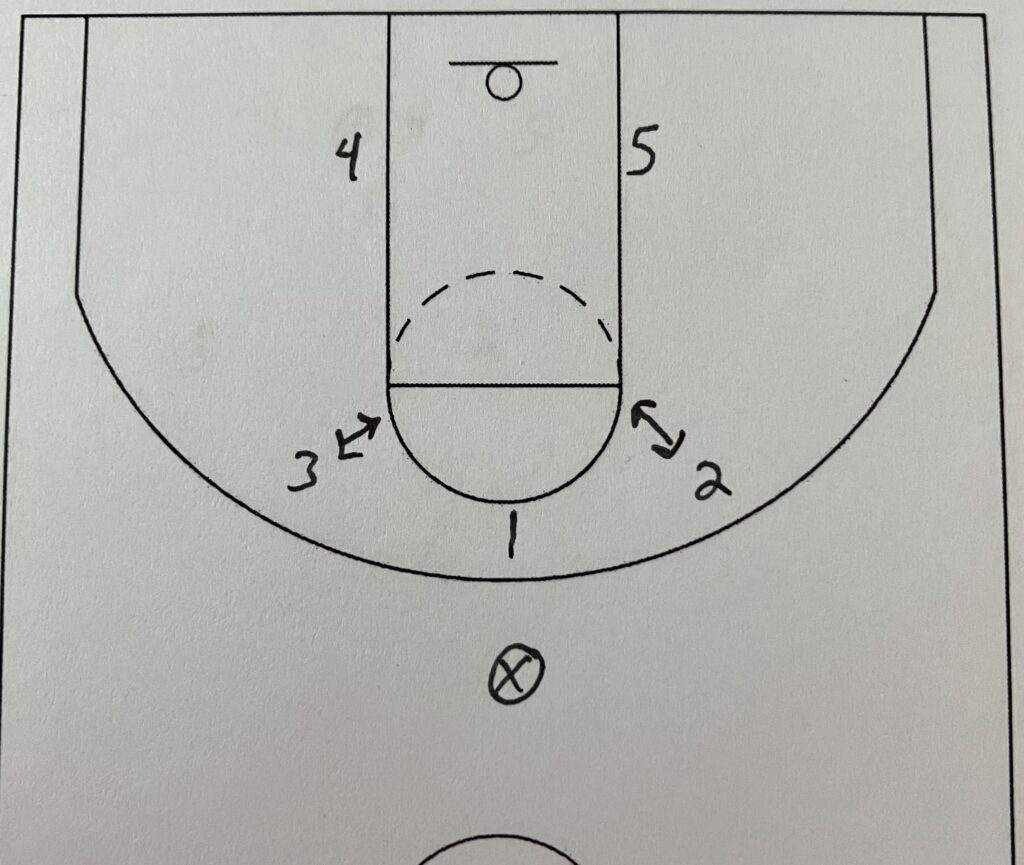
This is the initial setup of the 3-2 zone. Unlike the 1-2-2 zone, the 3-2 zone has the point(1) almost flat with the wings. Depending on how far the point(1) extends will dictate how much the two wings (2 and 3) will pinch the high post. If the point guard of the offense can not shoot very well, then the point(1) can stay at the foul line and invite the 3-point shot. The bigs(4 and 5) are on each block.
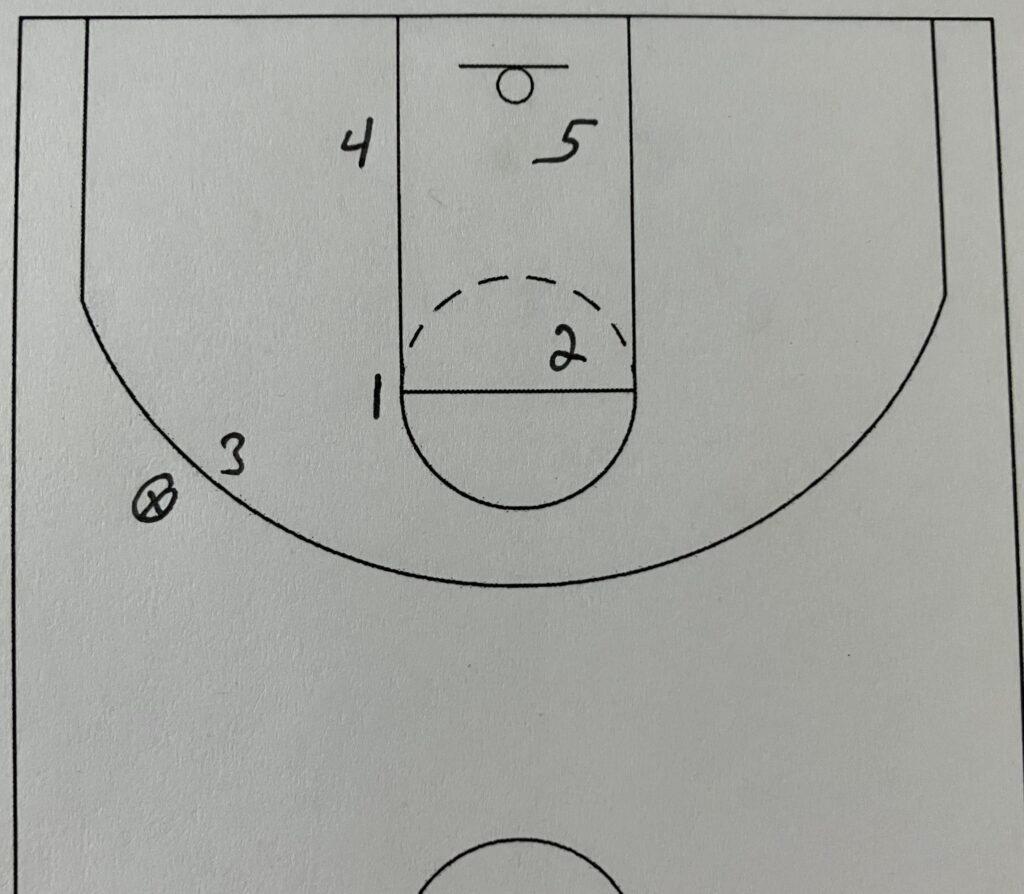

As the ball is passed to the wings, the defense shifts. Unlike most other zone defenses, the 3-2 zone does not rotate that much. In the 3-2 zone, the point(1) will follow the ball as it is passed around the perimeter.
The wings(2 and 3) will step up and guard the ball. The backside wing will slide into the middle of the lane. The point(1) will follow the ball to the high post.
The bigs(4 and 5) will slide with the pass towards the ball. The ballside big slides out towards the corner. The backside big slides to the front of the rim.
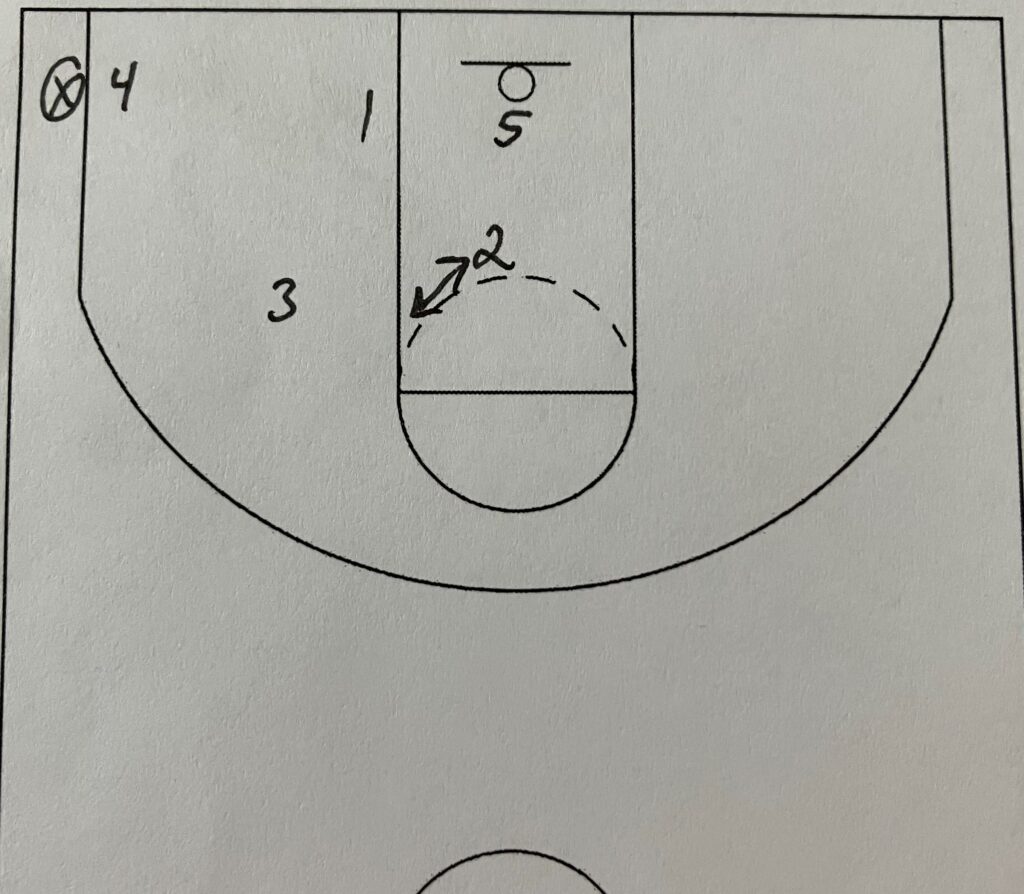
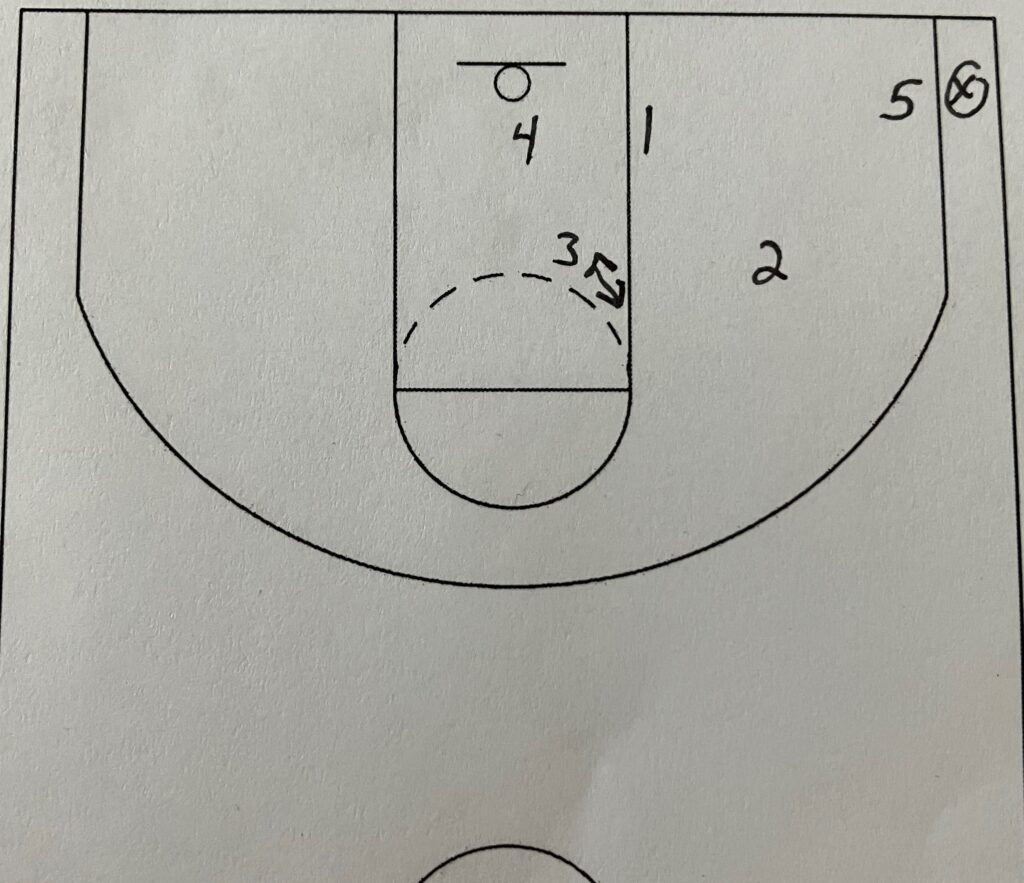
When the ball gets passed to the corner, the ballside big(4 and 5) guards the ball. The backside big stays at the front of the rim. The backside big really does not move from the wing to the corner pass.
The point(1) follows the ball all the way down to the block. This rotation is what makes the 3-2 zone hard to play defensively. The point(1) has to be able to guard the low post should the ball be entered into the post from the corner.
The ballside wing(2 and 3) slides back into the gap looking to help on a possible drive. The backside wing covers the middle of the lane up to the elbow. Again aside from the point(1), the other 4 players do not rotate very much.

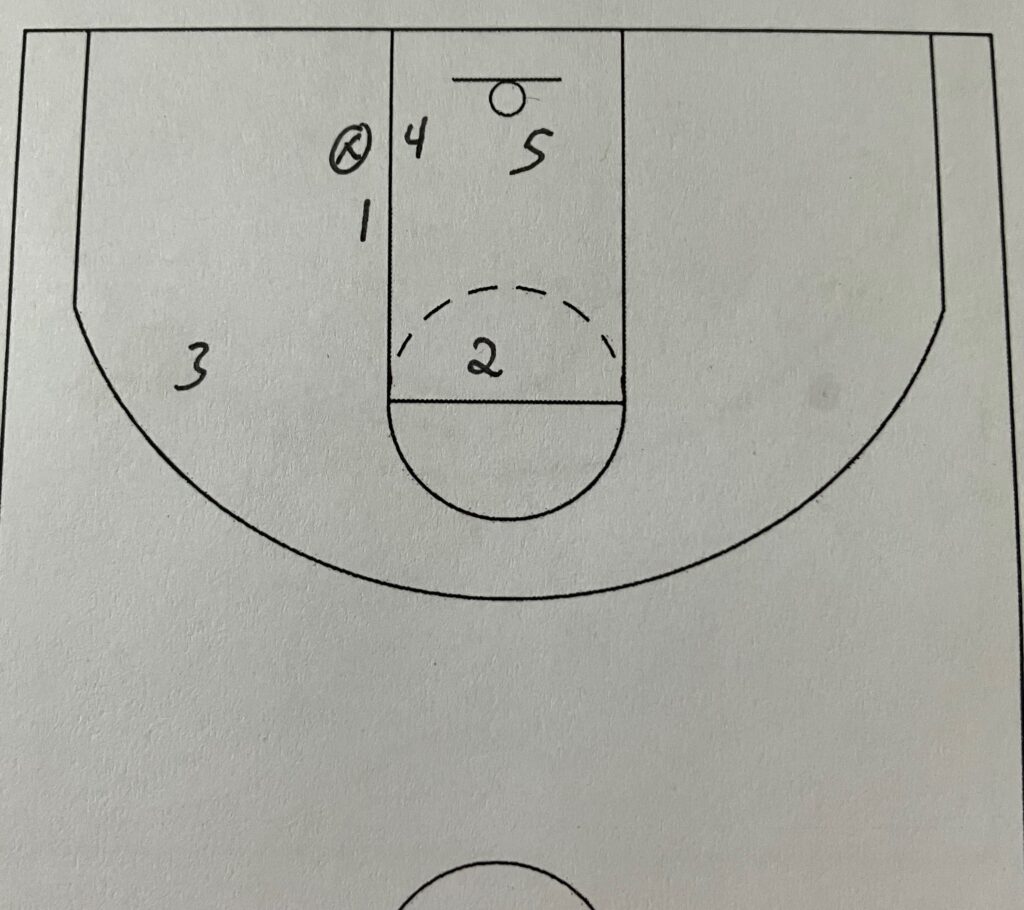
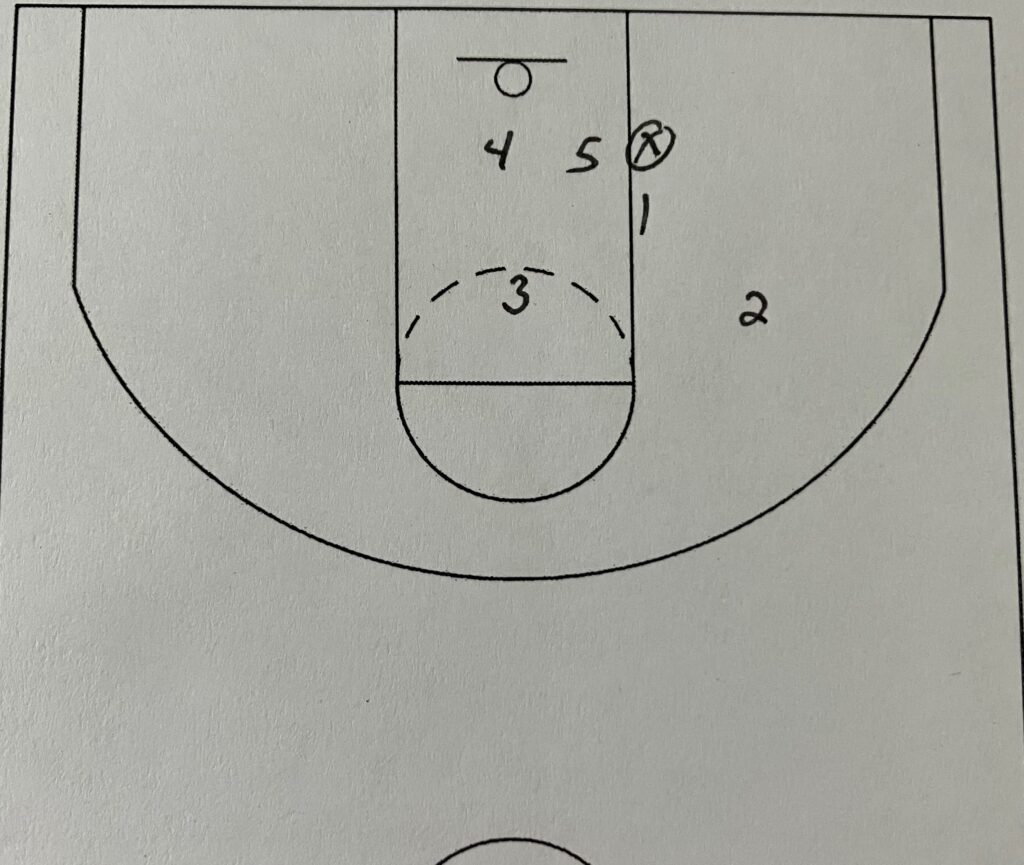
There are five situations where the ball enters the post. If the ball is passed straight to the post from the initial setup then these are the rotations from that setup. There are also post entries from the wing and corner discussed below. The three above are not likely because the ball entering the post from the top is unlikely. However, if it is passed to the post these are the rotations.
If the ball enters the high post, the hope is the point(1) will be below the ball. If the ball gets behind the point(1) in the high post then the offense is more than likely going to score. If the point(1) is still behind the ball, then the other four players do not have to rotate.
If the ball passed straight to the block from the top, the point(1) crashes down to the ball. The ballside big(4 and 5) guard the post and the backside big slides to the front of the rim. The two wings(2 and 3) slide towards the ball. The ballside wing steps out looking for the kick-out. The backside wing slides into the middle of the lane and high post area.


The other way the ball is in the post area is with a pass. If the ball is entered into the post from the wing, then the big(4) guards the ball. The point(1) comes down to double. The backside big(5) is still in front of the rim. The ballside wing(3) is guarding the passer and stepping down looking for the kick out. The backside wing(2) is middle of lane to high post. If the ball is on the other side, then everything is reversed with the bigs and wings.
If the ball is entered from the corner, then the point(1) is guarding the post. The ballside big(4) is splitting the difference or doubling down depending on how the team is wanting to guard the post. The ballside wing(3) is working just like the ballside big(4). The ballside wing(3) is splitting the difference between the offensive wing and post or is going down to double the post.
The defensive philosophy on whether to double and who is going to double will normally be a coaches decision. The backside big(5) is in front of the rim. The backside wing(2) is stepping down into the middle of the lane or high post. Again if the ball is passed on the other side of the floor, then the wings and bigs are simply reversed.
Trapping in a 3-2 Zone
The 3-2 zone is a passive zone so the opportunity to trap is not very good. When trying to trap, the rotations needed will not take away every close pass. There will be at least one spot close to the trap that will be unguarded. So, for a trap to work it has to surprise the offense and hope the offense does not realize there is a trap coming until the trap is already set. There are two spots that a trap could work outside of the post to create turnovers.


These first two scenarios are trapping right off the first pass. Once the passed is made, the point(1) immediately takes off to the offensive player. The ballside wing(2 and 3) guard the ball. The backside wing and backside big are what makes the trap either aggressive or passive.
These two backside players could rotate up. The backside wing(2 and 3) rotating up to the point guard. The backside big(4 and 5) could rotate up to the high post. The problem with rotating up with these two players is this would leave the entire backside of the court wide open. This would be very aggressive but the risk of a skip pass leaves the defense completely exposed.
If the two backside players stay in their normal spots, then the pass back to the top will be left wide open. This simple pass back to the point guard makes the trap easily beatable. Again, this is the risk-reward of trying to trap out of this passive zone.
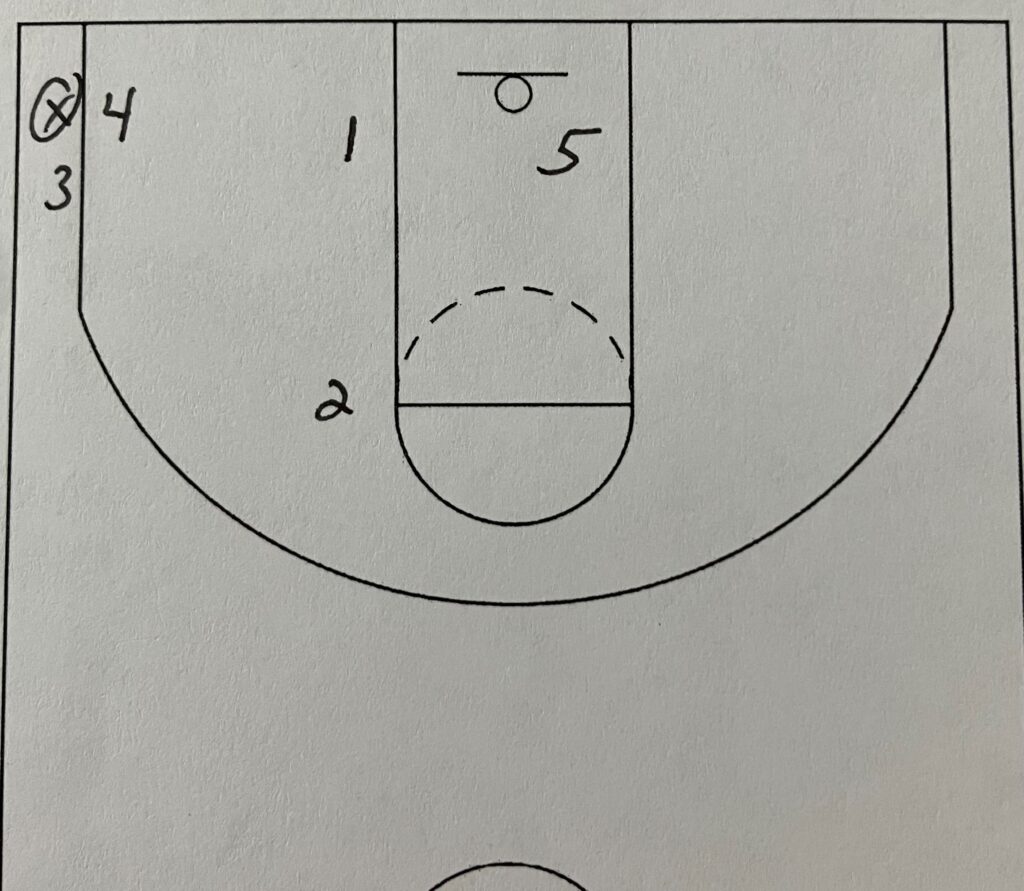
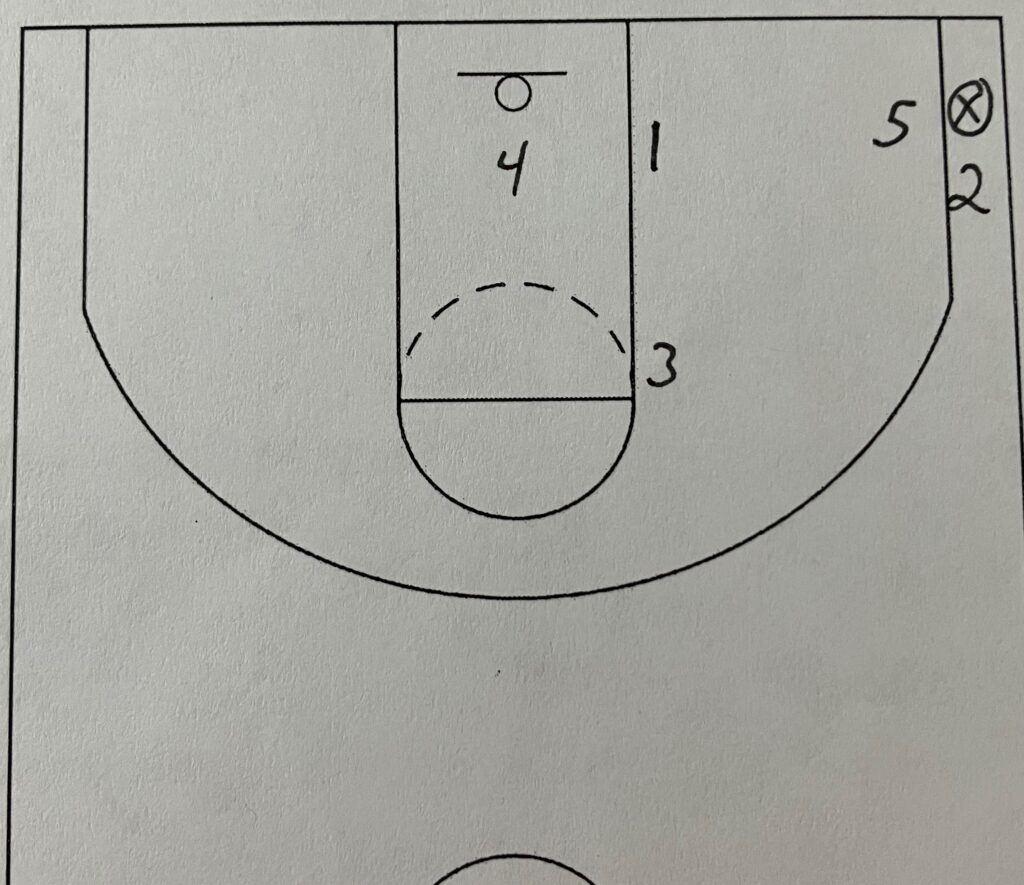
The 2nd trap area is the corner. For the trap to occur the wing simply follows the pass down to the corner. The ballside big is already coming out to guard and with the wing coming down it forms the trap. The point(1) is still on the ballside block like normal. Now the backside wing(2 or 3) rotates over to the ballside elbow. The backside big(4 or 5) rotates to the front of the rim. This rotation leaves the pass right back up the sideline open.
If the defense was to take away the pass up the sideline then the backside wing will rotate all the way across the floor. That in itself is a long run to make. The other issue with the wing moving out is this leaves the high post area wide open.
The backside big can rotate up to the high post to take this pass away. If the backside wing and post rotate up then the entire backside is open to the offense again. This type of rotation is aggressive but gives the offense a chance to pass the ball to the backside and attack on a rotating defense.
A 3-2 zone defense can trap but it has one of two issues. The first is not being aggressive enough and leaving an easy pass back from where it came from to get around the trap. The second is being overly aggressive and leaving the entire backside of the floor without any coverage. A skip pass gives the offense the ability to attack with the defense completely out of position. Personally, I would switch into another defense if I was wanting to try and trap the offense.
Personnel Needed for a 3-2 Zone
The single biggest need is the point. This player, as I have stated above, must be able to guard all 5 positions. The player needs to be quick enough to rotate with each pass. After that need is met, the other 4 players can be filled by just about any player. The amount of rotation done by the other players is minimal.
The other bit of personnel that would be a great addition is two tall bigs. The greater the length of the bigs, the more rim protection there is. With the added rim protection, the ability of the bigs to rebound on the backside should help to limit the offense to just one shot per trip.
Keys to a 3-2 Zone
1) Point Defender
The biggest key is having a point that can play and guard that spot. The player must be able to do everything necessary for the defense to work. Without this single player, the defense will struggle. The 3-2 zone is not a defense seen too often because most teams do not have this player.
2) Keep Ball Out of Middle
The 3-2 zone does not have much rotation. But if the ball gets into the interior of the defense, then everything gets messed up. The point defender in this defense must move quickly enough to get to the high post as the ball moves around the perimeter. The other key to this is most teams are going to screen the point, so this player must be able to see and get through screens.
3) No Second Shots
The bigs are staying on the backside so there should be a rebounding advantage to the defense. This defense has the bigs in the best rebounding position. If the offense is still getting second scoring chances, then a new defense should be used.
By keeping the offense to one shot per possession, it puts more pressure on the offense to score on each shot. This added pressure could cause the offense to tighten up and shoot worse.
Youth Basketball
I do not like the 3-2 zone for youth basketball. It is far too passive. And it does not require much work from 4 players. The amount of skill learned in this defense is minimal. For the overall skill development, I would put the 3-2 zone near the bottom of the list of zone defenses to play. There are a bunch of other zone defenses to pick which help youth players more than the 3-2 zone.
This can be a good defense at the JV or Varsity high school level given a team has one player who can play the point position. But this defense is much better suited to the high school teams rather than youth teams.
Conclusion
The 3-2 zone is easy to learn and teach. It is easy to run. It is very simple. But it requires at least one player to be able to do everything on defense. The defense requires very little from 4 players but a great deal from 1 player.
It is a passive defense so there needs to be other defenses a team can run to be successful. It does have its spots to be run where it can be very successful. Although there are other situations where the 3-2 zone is not a good defense to be used.
If the team has the personnel to run the 3-2 zone, then I see no reason why a team would not have this defense installed. As a coach this is a defense I have tucked away as a just in case. The 3-2 zone can be hard to play against if the offense is unsure what to do.
I personally like to use it after halftime of games. I stay with the defense until the offense starts scoring against it. I like to use it after halftime, so the opponent does not have halftime to walk through exactly what needs to be done to break the zone.

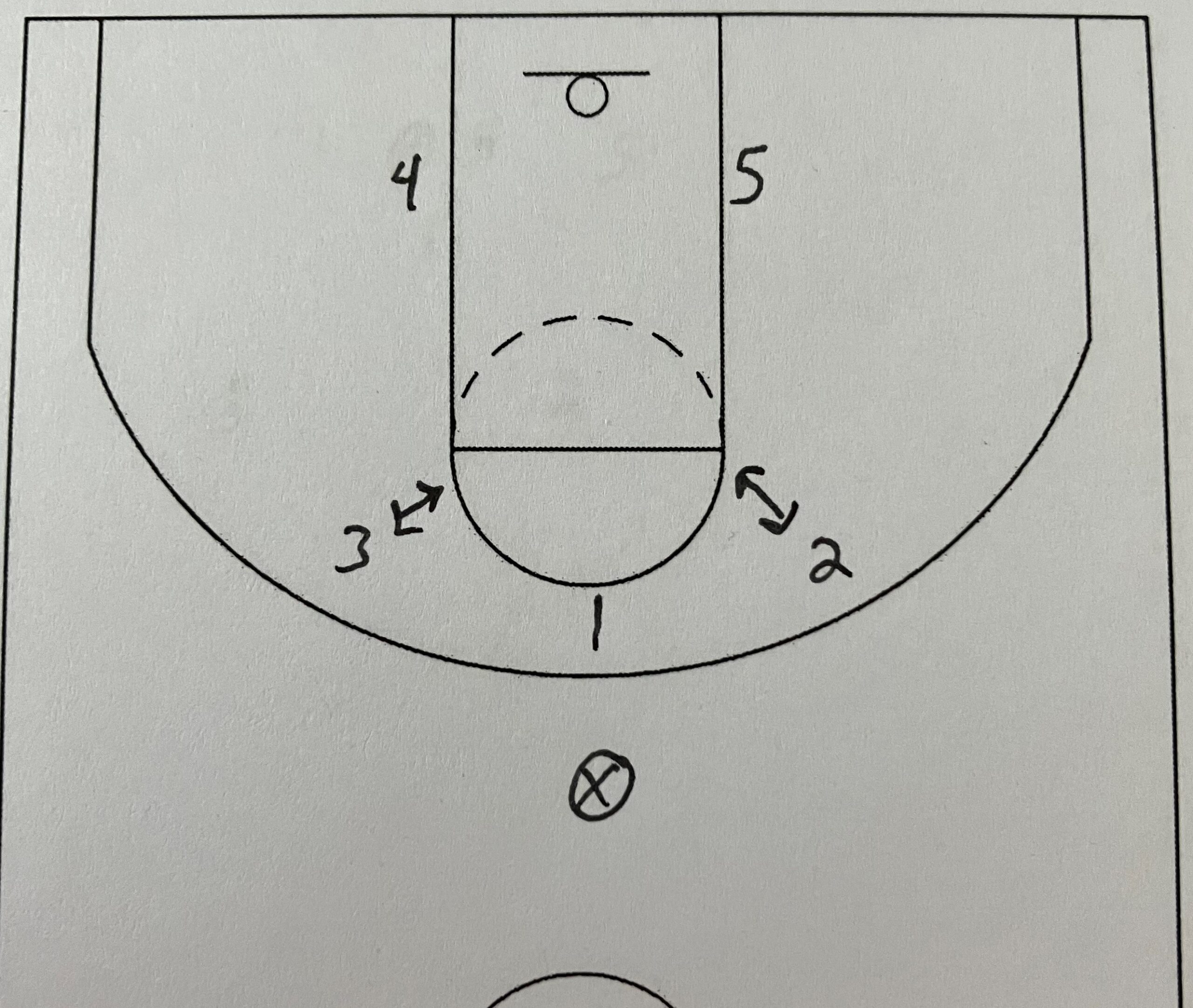
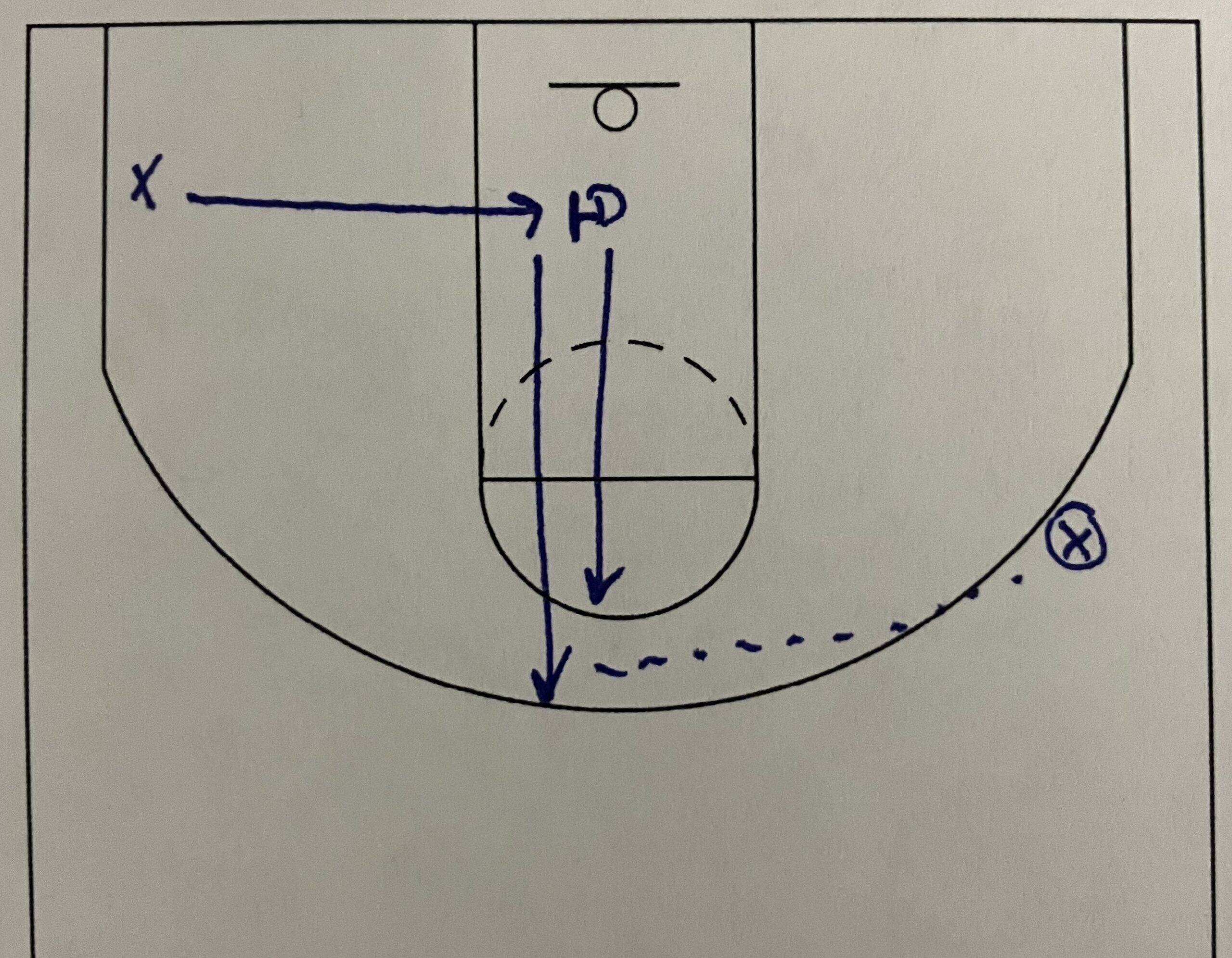
3 thoughts on “3-2 Zone Defense Guide”